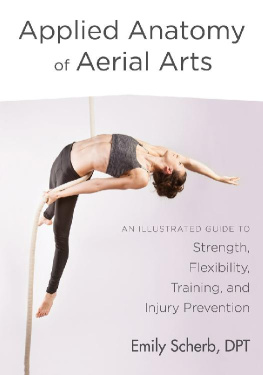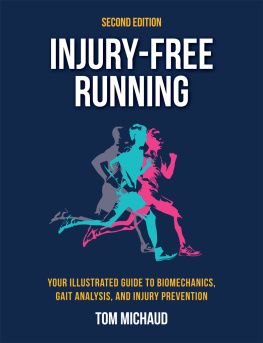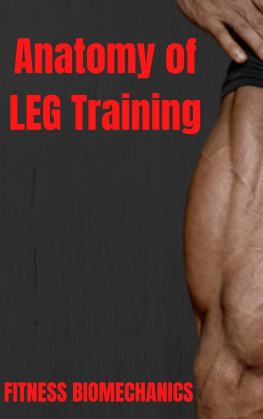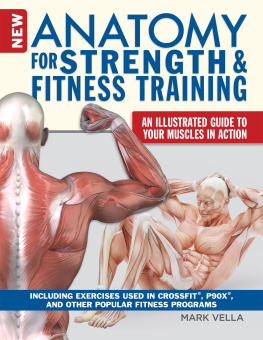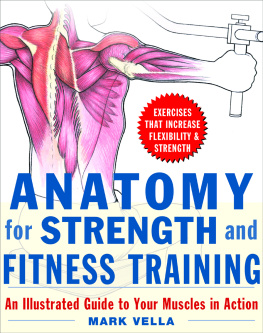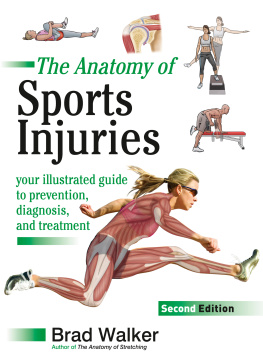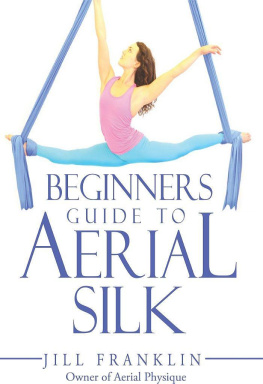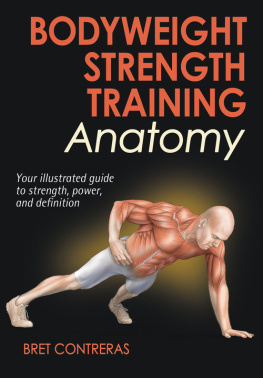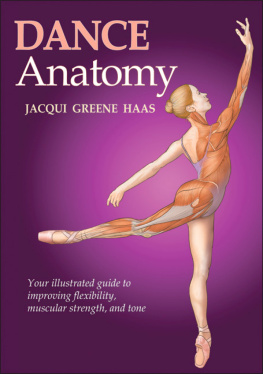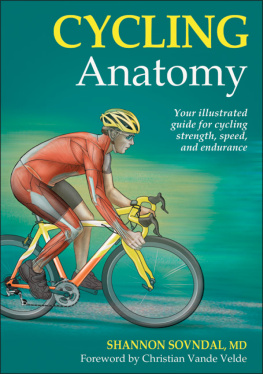CONTENTS
Applied Anatomy of Aerial Arts
An Illustrated Guide to Strength, Flexibility, Training, and Injury Prevention
Emily Scherb, DPT

Copyright 2018 by Emily Scherb. All rights reserved. No portion of this book, except for brief review, may be reproduced, stored in a retrieval system, or transmitted in any form or by any meanselectronic, mechanical, photocopying, recording, or otherwisewithout the written permission of the publisher. For information contact North Atlantic Books.
Published by
North Atlantic Books
Berkeley, California
Cover photo by Danny Boulet
Cover design by Emma Cofod
Book design by Happenstance Type-O-Rama
Photography by Danny Boulet
Illustrations by Tiffany Slaybaugh Davanzo MA, CMI
Additional illustrations courtesy of Lotus Publishing
Printed in the United States of America
Applied Anatomy of Aerial Arts: An Illustrated Guide to Strength, Flexibility, Training, and Injury Prevention is sponsored and published by the Society for the Study of Native Arts and Sciences (dba North Atlantic Books), an educational nonprofit based in Berkeley, California, that collaborates with partners to develop cross-cultural perspectives, nurture holistic views of art, science, the humanities, and healing, and seed personal and global transformation by publishing work on the relationship of body, spirit, and nature.
North Atlantic Books publications are available through most bookstores. For further information, visit our website at www.northatlanticbooks.com or call 800-733-3000.
Library of Congress Cataloging-in-Publication Data
Names: Scherb, Emily, author.
Title: Applied anatomy of aerial arts : an illustrated guide to strength,
flexibility, training, and injury prevention/Emily Scherb.
Description: Berkeley, California : North Atlantic Books, 2018. | Includes
index.
Identifiers: LCCN 2017048284 (print) | LCCN 2018000928 (ebook) |
ISBN 9781623172176 (ebook) | ISBN 9781623172169 (paperback)
Subjects: LCSH: AerialistsTraining ofHandbooks, manuals, etc. | BISAC:
PERFORMING ARTS/Dance/Reference. | PERFORMING ARTS/Circus. | MEDICAL
/ Anatomy.
Classification: LCC GV1815 (ebook) | LCC GV1815 .S34 2018 (print) | DDC
796.46dc23
LC record available at https://lccn.loc.gov/2017048284
North Atlantic Books is committed to the protection of our environment. We partner with FSC-certified printers using soy-based inks and print on recycled paper whenever possible.
To my parents, who support and encourage me in everything I do, even though they dont understand why anyone would want to fly through the air
Medical Disclaimer
T he following information is intended for general information purposes only. Individuals should always see their health care provider before administering any suggestions made in this book. Any application of the material set forth in the following pages is at the readers discretion and is his or her sole responsibility.
Acknowledgments
F or a long time, I have been wanting to write this book and to create this resource for the aerial community. Without the help of friends, family, skilled professionals, and the Seattle circus community, it would have remained an aspiration.
My good friend and writer, Beth Jusino, you made writing a book seem possible. Thank you for the roadmap and guidance as well as sharing the process with me while on your own journey.
Tiffany S. Davanzo, thank you for responding to my email from out of nowhere with excitement and acceptance of the challenge of visualizing aerialists in motion. Your beautiful illustrations bring the book to life and leave me giddy with joy.
Danny Boulet, a fantastic photographer who made everyone laugh throughout our shoots: the fun and professionalism you brought was a rare pleasure.
To my fabulous aerialists and models, Jenn Bruyer, Enrique Escada, Leah Jones, Alexandria Ostrem, Oliver Parkinson, Jody Poth, Alicia Radford, Megan Strawn, Ivanna Wei, and Susie Williams, thank you. You shared your knowledge and joy, your talent for performing skills perfectly, and your precise skill for doing it wrong. You were an absolute pleasure to work with, and you look amazing with your muscles showing!
I was thrilled to have beta readers from across the country and from across the health care and circus community. Bev Sobelman, you were my first reader who read a messy manuscript and came back with honesty, excitement, encouragement, and a thoughtful critique. Rain Anya, Liz Cooper, Terry Crane, Mike Denton, Megan Gendell, Elsie Smith, and Dr. Lynnette Khoo-Summers, thank you for your professional knowledge, for sharing your perspectives, for questioning me, and for your time.
I am so thankful to live in a strong circus community in Seattle, Washington. The schools, instructors, performers, and students make this a fantastic place to grow and work. You have helped me understand the craft of circus by sharing your passions and your knowledge, and occasionally entrusting me with your care. Thank you for being my partners in learning.
Tom Mullen, thank you for being by my side, for supporting me in all that I do, from help with comma placement to knowing when to make me go for a hike. I love you.
Preface
I have been an aerialist my whole life and now, in my practice as a Doctor of Physical Therapy, I have the privilege to work with circus artists. My job is to help them understand the stresses and common injury patterns all aerialists face and to give them the tools to heal themselves. As masters of learning movement, aerialists are able to quickly adapt to changes. You have the ability to perform your best while protecting your body from injury with correct form, proper alignment, and good training habits. This book can help you take the first steps toward practicing good habits to enable you to pursue the training for decades.
Your body is your partner in movement. Applied Anatomy of Aerial Arts uses an anatomical approach to the skills you perform every day that will help you understand how to achieve the required coordination, muscular control, strength, and fitness you will need to safely and seamlessly move through the air.
Aerialists are strong and talented athletes. However, that strength can hide an ability to cheat skills: to use the wrong muscles to drive or control a movement. Movement compensations when performing a skill or even hanging can be the difference between being able to invert with straight legs and arms and struggling for years. If this doesnt make sense yet, dont worry: it soon will. If you are able to recognize these compensations in yourself and others, you will be able to stop overuse injuries before they begin and to do what we all love best: continuing to train without interruption.
As an aerialist, you have a drive to learn and progress, to be strong and graceful, and to achieve and perform. Correct alignment, and the understanding of what muscle should be contracting, moving, stabilizing, and lengthening, will enable you to move smoothly and effortlessly because you will no longer be fighting your own movement. By having good fundamentals, you will more quickly be able to incorporate new skills into your training.
I hope this book can be helpful for aerialists of all levels. For beginning students, Applied Anatomy of Aerial Arts will enable you to start your training practice on a solid foundation of trusted knowledge. For experienced aerialists, this book will help you build a training program, understand injuries, and prevent lost time from training due to improper movement mechanics or flaws in your technique. Instructors can use the resources in this book to help provide explanations or visual aids to your students, to help you more quickly identify imperfect technique in your students, and to notice when they are most at risk for injury.
Next page
